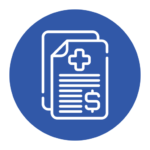Submitting claims is a necessary step towards getting paid for the healthcare services offered by any medical professional. While most people use computers to undertake this task, there are those who can still submit their requests without involving software. In this blog post, we will take you through the process of submitting claims in medical billing without using software. Med Revolve Billing ensures that these stages are followed with the objective of providing effective billing services for healthcare providers.
Tag: billing
HOW TO BECOME A MEDICAL BILLER AND CODER?
HOW TO BECOME A MEDICAL BILLER AND CODER? Introduction If you are interested in a career in healthcare that doesn’t require years of medical school then becoming a medical biller or coder might be the perfect for you.In the healthcare industry, medical billers and coders play an important role in ensuring that healthcare professionals are… Continue reading HOW TO BECOME A MEDICAL BILLER AND CODER?
Difference Between Medicare and Medicaid Programs
Healthcare can be confusing, especially when understanding different programs like Medicare and Medicaid. These two programs are designed to help people with their healthcare requirements, but they are different. In this blog post, Med Revolve Billing provides the critical differences between Medicare and Medicaid.
How to Optimize Your Accounts Receivable (AR) in Healthcare?
One essential component of healthcare financial management is accounts receivable (AR). It stands for the total amount of money that a healthcare facility is charged for the services rendered. Maintaining a healthy cash flow and ensuring the healthcare facility’s financial stability depend on efficient AR management. At Med Revolve Billing, we discuss how to optimize your account receivable and strategies to improve them in the healthcare sector.
Are Medical Billing Services Really Worth It? Pros and Cons Uncovered
Medical billing services are important in the healthcare industry. They manage the complicated financial elements of patient care.












